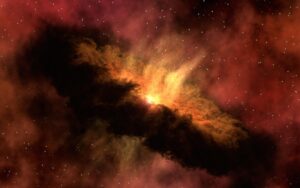In this section, we will learn how the solar system and Mother Earth were formed 4.5 billion year ago. We will also learn how the earth’s crust and atmosphere, the crucial element for the development of life forms. We will discuss the following:
- Formation of Gaseous Planets
- Formation of Earth
- Planetary Differentiation
- Primordial Crust
- The Moon
Section Preview: 3D model of Solar System
As the Solar Nebula began to cool, the remaining dust grains started to bind together. The further development of a Terrestrial planet is thought to have occurred in phases, beginning with the production of a small planetesimal about 10 km in diameter. Many of the early planets were destroyed as they collided.
Planetesimals that were not destroyed expanded quickly to the size of a moon (>1000km diameter). This rapid accretion quickly began to reduce material in the vicinity surrounding the planetesimals from which it was growing.
These planetesimals created a few planetary embryos that were around the size of Mars (>5000 km diameter). Only a few planetary embryos were growing and they all grew to be around the same size. Accumulation slowed as planetary materials were accreted from the surrounding.
Iron, the most abundant element capable of forming a dense molten metal phase, gathered in planetary core. Siderophile ("iron-loving") elements descend into the core because they dissolve easily in iron, either as solid solutions or in molten form.
Lithophile elements ("rock-loving") remained on or near the Earth's surface because they readily react with oxygen to create compounds that do not sink into the Earth's core.
At temperatures and pressures found on the surface, atmophile elements (also known as "volatile elements") remain predominantly on or above the surface because they occur as liquids and/or gases.
Terrestrial planets had largely formed by continual accretion of rocky protoplanets. The Moon formed as a result of a collision between a proto-Earth and a Mars-sized planet, throwing melted pieces of the planet's crust into space. Gravity held the expelled particles together, resulting in the formation of a moon.
Torrential downpours lasting millions of years formed the Earth's oceans, allowing new chemicals to be formed in a liquid environment. Subsequently giving a platform for origin of Life.


